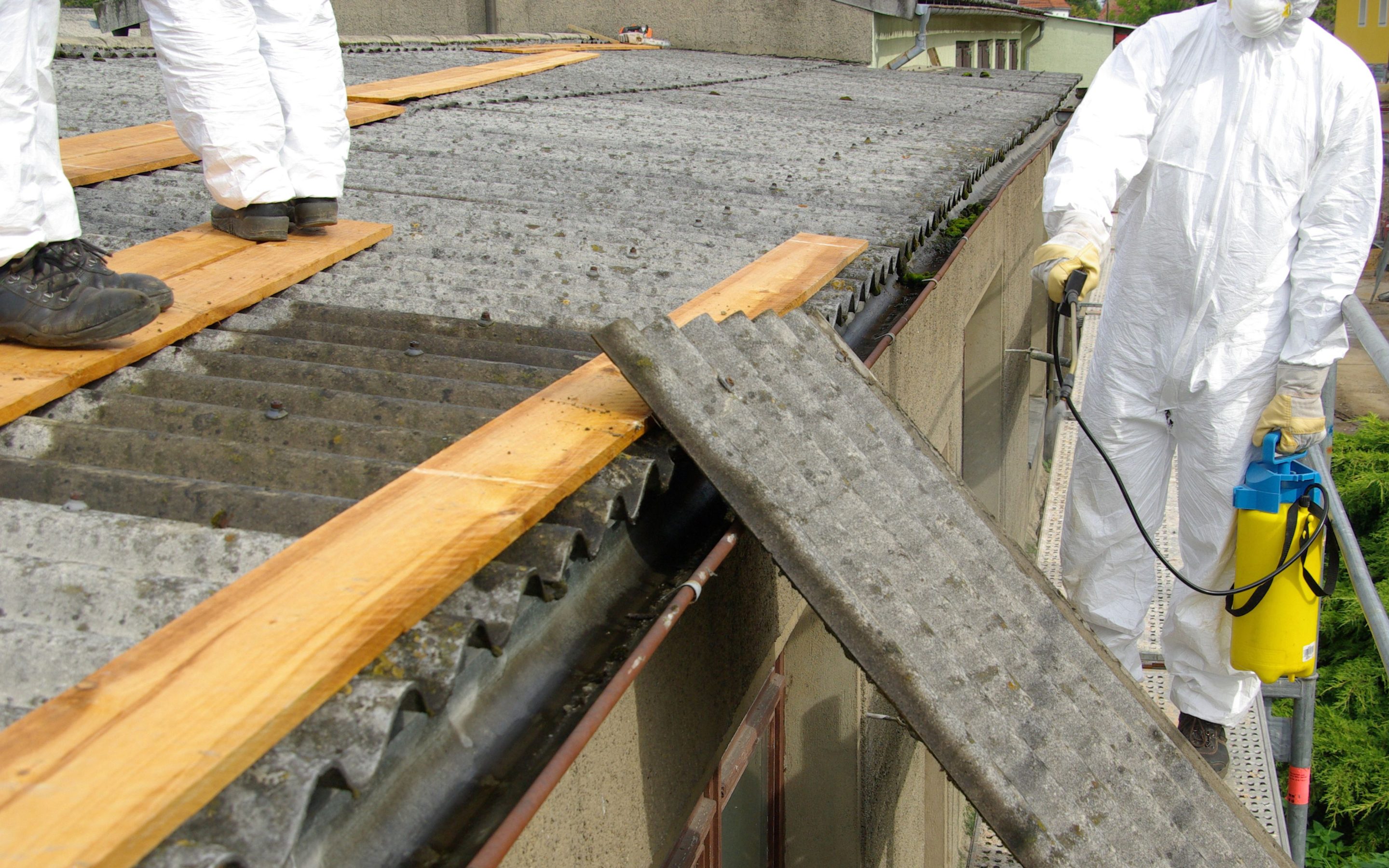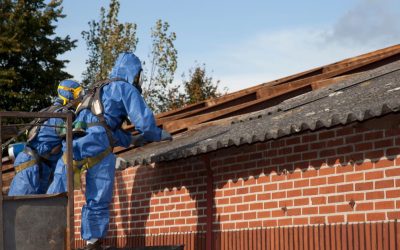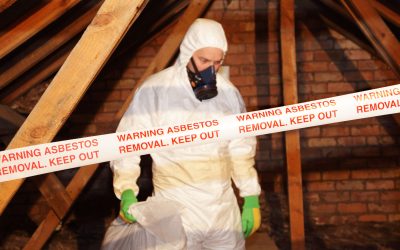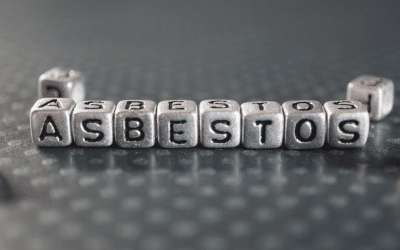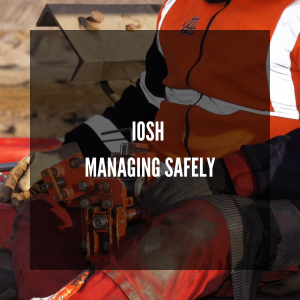Asbestos, once a widely used construction material known for its durability and fire-resistant properties, is now internationally infamous for its severe health risks. As asbestos doesn’t break down naturally and is therefore present in many UK buildings, identifying asbestos-containing materials (ACMs) is crucial to mitigate exposure and ensure a safe environment, especially for those working in the construction industry.
In this guide, Safety Services Direct answers the questions we’re most often asked, exploring the appearance of asbestos, the identification process, and the specific characteristics of various asbestos-containing forms.
What Does Asbestos Look Like?
Contrary to popular belief, asbestos is not easily identified by sight alone. In its natural state, asbestos looks like fibrous crystals, often in bundles. These fibres are microscopic, making visual identification without professional assistance nearly impossible.
What Does Asbestos Dust Look Like?
From the above, you probably already know the answer to this one: It is not easily visible to the naked eye, but if present, it can pose severe health risks when inhaled. Asbestos dust is a byproduct of damaged or deteriorating asbestos-containing materials and is typically very fine and may not settle immediately, contributing to the airborne asbestos fibre hazard.
What Colour Is Asbestos?
Asbestos comes in various colours, with white, blue, and brown being the most common. White asbestos (chrysotile) is the most prevalent and was extensively used in construction. Brown asbestos (amosite) was commonly used in cement, insulation, roofing, and other construction materials. Blue asbestos (crocidolite) is less common and carries higher health risks due to its needle-like fibres.
What Does Asbestos Insulation Look Like?
While asbestos particles may not be identifiable, asbestos insulation can be. Asbestos insulation often resembles fluffy or fibrous material and can take on various appearances, including loose-fill, pipe, and sprayed-on insulation. The distinctive fluffy look can help differentiate it from non-asbestos insulation. However, this is not always the case, so unless you’re a pro, it’s always best to consult with someone who is.
What Does Asbestos Tile Look Like?
Asbestos-containing tiles, commonly used in construction before the 1990s, are also challenging to identify. They often resemble vinyl or asphalt tiles but might be more rigid and have a unique asbestos-containing backing. Ultimately, the only sure way to know whether your floor or ceiling tiles contain asbestos is to have a licensed inspector check your premise and send a sample for testing.
What Does Asbestos Board Look Like?
Asbestos insulating board is one of the few building materials that a layman may actually be able to identify asbestos in. This is because, while asbestos-containing boards may appear similar to non-asbestos boards, they often have a distinct texture. Asbestos boards were commonly used in construction for fireproofing and insulation, and their identification is crucial for safe removal and handling. So, while you may be able to learn the texture yourself, asbestos exposure is not to be taken lightly, and it’s still best to call in the professionals.
How to Identify Asbestos
Ultimately, identifying asbestos requires professional inspection and testing. Asbestos fibres are microscopic, so professionals use specialised techniques, including microscopy and other testing methods, to accurately determine the presence of asbestos in materials. And since asbestos-related diseases are still prevalent in the UK, it remains crucial for older buildings to be tested for asbestos materials. If you are carrying out building modifications then you should obtain an asbestos survey.
Why Invest in Asbestos Awareness Training?
So, if one cannot simply identify asbestos floor tiles, for example, what good is training? Asbestos awareness training, such as the UKATA, IATP and RoSPA Asbestos Awareness Course, provides essential knowledge and skills necessary to recognise, handle, and manage asbestos safely, even when it’s not immediately visible. Here’s how the course serves its purpose:
- Risk Awareness: Throughout our Asbestos Awareness Courses, participants learn about the types of asbestos, including its properties and associated risks. Understanding these risks is crucial for anyone working in industries where asbestos exposure is possible, such as construction, maintenance, and renovation.
- Health and Safety: The course educates individuals about the health risks associated with asbestos exposure. Participants learn about the serious respiratory illnesses that can result from inhaling asbestos fibres, such as asbestosis, lung cancer, and mesothelioma. Knowing these risks empowers individuals to take appropriate precautions to protect themselves and others.
- Handling and Management: Participants are taught how to manage asbestos safely, including proper handling techniques and where they may encounter asbestos-containing materials. This knowledge enables workers to minimise the risk of exposure and follow established protocols for safe handling and disposal.
- Regulatory Compliance: If your work environment increases the likelihood of encountering asbestos-containing materials, workers must undergo adequate training in asbestos awareness and safety practices, according to the Control of Asbestos Regulations 2012.
- Emergency Response: In addition to preventative measures, the course also covers emergency response procedures in the event of accidental disturbance or damage to asbestos-containing materials. Participants learn to contain the area, minimise further exposure, and report incidents appropriately.
Overall, the Asbestos Awareness Courses equip individuals with the knowledge and skills necessary to work safely with or around asbestos, ensuring compliance with regulations and promoting a culture of health and safety in the workplace!
Do You Work With Asbestos?
Identifying asbestos-containing materials is a complex process that requires particular expertise. Visual inspection alone won’t do it, and attempting to identify asbestos without proper training can lead to serious health risks.
If you suspect the presence of asbestos, always prioritise safety, and never underestimate the importance of training and professional assistance.
To find out more about the health and safety training offered by Safety Services Direct, get in touch with us today.


